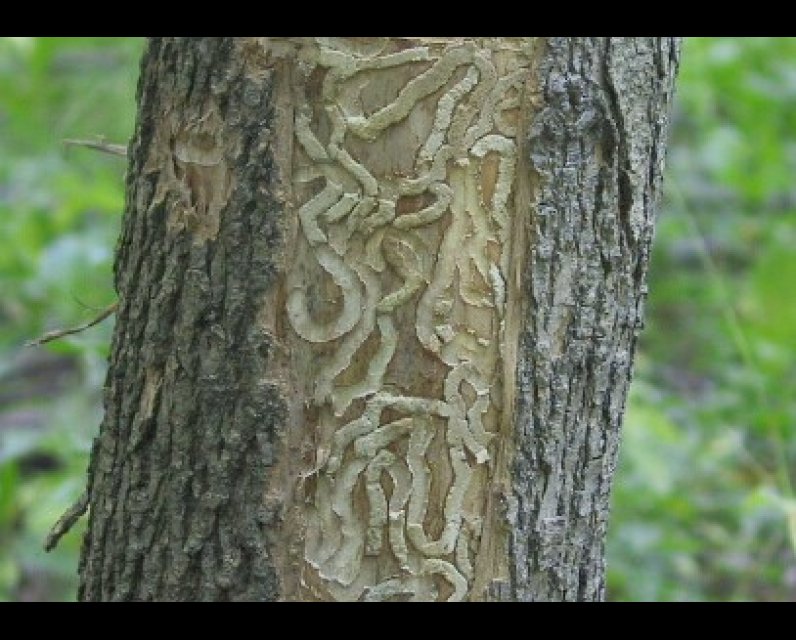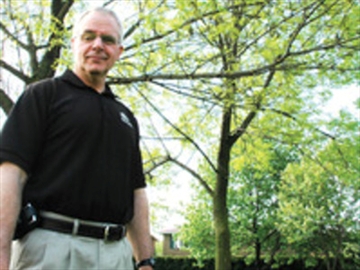Unpublished Opinions
Joe Meating is the President of BioForest Technologies Inc. Joe has a B.Sc. in Wildlife Biology and an M.Sc. in Ecology from the University of New Brunswick, as well as advanced training in forest entomology. He recently completed the ISO 14001 Environmental Management Systems Lead Auditor training.
From 1980-1996, Joe was the Forest Insect Control Officer with the Forest Insect and Disease Survey Unit of the Canadian Forest Service (CFS) in Ontario. As Director of Forest Surveys and Protection for BioForest Technologies Inc., Joe has been involved in developing and delivering a complete spruce budworm management program to the Province of Saskatchewan. He has also been involved in the development and implementation of pest management tools such as the spruce budworm and jack pine budworm decision support systems, field trials to assess pesticide efficacy, and the design and delivery of custom pest surveys and assessments.
About BioForest Technologies Inc.:
BioForest is a unique forest consulting company working hard to ensure healthy forests for today and tomorrow. Since 1996, BioForest Technologies Inc. has kept forests healthy with scientific and technical expertise. It specializes in innovative product development and forest protection strategies. It works with clients to manage pests before, during, and after serious attacks, to minimize the effects of pest outbreaks. Our experienced and knowledgeable staff will work with clients to design effective pest management strategies for urban forests, commercial forests, woodlots, cottage properties and everything in between. BioForest has a strong research and development capability and has worked with many clients to develop new, more effective pest management tools, such as the EcoJect® System (US Patent 7,114,289), a tree microinjection tool for the application of systemic pesticides into high value trees.
BioForest is the registrant of TreeAzin®, a systemic insecticide, providing up to two years control of Emerald Ash Borer and other insect pests in Canada and the U.S. TreeAzin® was developed for treating threatened trees in urban forests and environmentally sensitive areas. The company is also the distributor of Arbotect 20-S®, a fungicide injection treatment for Dutch Elm Disease prevention in Canada.
BioForest Emerald Ash Borer Treatment Update

This open letter is intended to update residents living in and around Ottawa and Toronto about new developments in the treatment of Ontario's ash trees against the Emerald Ash Borer beetle (EAB), by BioForest Technologies Inc., the manufacturer of TreeAzin® Systemic Insecticide. A bio-pesticide approved in Canada and the US. for use against EAB.
Prior to 2002, we had no history with emerald ash borer (EAB) the way we do with native pests. We also had no established methods to control it. Instead, we have had to develop logical treatment strategies based on the best information we have at any one point in time and adapt our strategies to new information as it becomes available.
Since 2008, TreeAzin® Systemic Insecticide has been used to treat thousands of trees across Ontario and Quebec for EAB. After five years, we are beginning to see trends emerge. We have been fortunate to be able to work with the Town of Oakville to monitor treatment efficacy. Each year we have evaluated our biennial treatment strategy on some 350 treated and untreated trees in Oakville. This year we are expanding the survey to some 850 trees.
Here is a brief summary of what we are seeing:
- Initiating treatment in the early stages of an EAB outbreak is critical to successful treatment. In Oakville, 98% of the 5,300 trees treated since 2008, are still alive. Trees that were first treated in 2008, 2009 and 2010 are, in general, in good condition in 2013. Trees that were first treated in 2011 or 2012 are more variable in condition: some appear to be doing well but others are not. TreeAzin is injected into the base of a tree and moves throughout the tree via its conductive tissues. EAB feeding destroys these tissues and, eventually, the damage is so significant that movement of TreeAzin is impeded and the treatment becomes less and less effective. It is similar to a vaccination administered into a human at the ankle. The vaccination will spread throughout the body via the body’s veins and arteries. However, if the veins have been partially or completely severed at the thigh, the vaccination cannot circulate around the body. EAB essentially severs the tree’s “veins and arteries,” preventing TreeAzin from circulating within the tree. This is why timing of treatment is so crucial to the health of the tree.
- Green ash appears to be much more vulnerable to EAB than white ash, so it is essential to initiate treatments on green ash as soon as EAB has been detected within 25 kms of your area. White ash should be treated soon after to minimize damage.
- If you have not treated your ash yet, and you are in the Ottawa or Toronto areas and want to try to save your tree/trees, we suggest the following steps:
- Have your tree assessed by a certified arborist. The arborist should assess your tree for evidence of EAB attack but, just as importantly, they should assess general ash tree condition in your neighborhood to get some sense of the EAB situation. If EAB is causing damage on neighboring ash, then you must assume that your tree is affected too, even if it looks healthy. One thing we have learned is that when it comes to EAB, the situation is always worse than it appears! Always!
- If you decide to treat your tree with TreeAzin, then do so immediately.
- Next year, have your tree re-assessed by an arborist and if the tree has not deteriorated significantly, we suggest that you re-treat your tree in 2014. This process should be repeated in 2015 to help insure your tree’s survival. It may be possible to switch to biennial treatments if the tree is doing well.
We will continue to evaluate our EAB treatment strategies and keep you posted.
Joe Meating, President
BioForest Technologies Inc.



Comments
Be the first to comment